SI.com's NHL All-Small Teams

Here's the thing about Johnny Gaudreau of the Flames: He may be a throwback, but he's no anomaly.
Tale of the Tape: Johnny Football vs. Johnny Hockey
At 5-foot-9 and 150 lbs pounds, the Calgary rookie might have found it easier to thrive in earlier generation when undersized players like Dave Keon (5-9, 175) and Dennis Maruk (5-8, 175) and Rod Gilbert (5-9, 180) established themselves among the best in the game, but as his impressive start — 6-17-23 in his first 32 games — with the Flames proves, there's still room for the little guy in today's NHL.
In fact, he's far from alone. Martin St. Louis (5-8, 180) of the Rangers has been a perennial challenger for the scoring title. David Desharnais (5-7, 177) is a top six center for the Canadiens. Forward Rocco Grimaldi (5-6, 172) is earning the chance to prove that he belongs with the Florida Panthers. And players like Jeremy Bracco, a 5-9, 154-pound forward with the U.S. National Team Development Program, are regarded without hesitation as potential first-round picks.
Undersized used to be a dirty word in the NHL but as the focus shifts to skill and possession, players are judged more by what they bring to the table than how much space they take up at it.
It hasn't taken long for Gaudreau to establish himself as one of the better small players in the game, but is he one of the best? Check out our galleries featuring the best 5-9 and under NHL players of all time, and those skating today to see if Gaudreau makes the cut.
All Time
MARCEL DIONNE, forward (5-foot-9, 190 lbs)
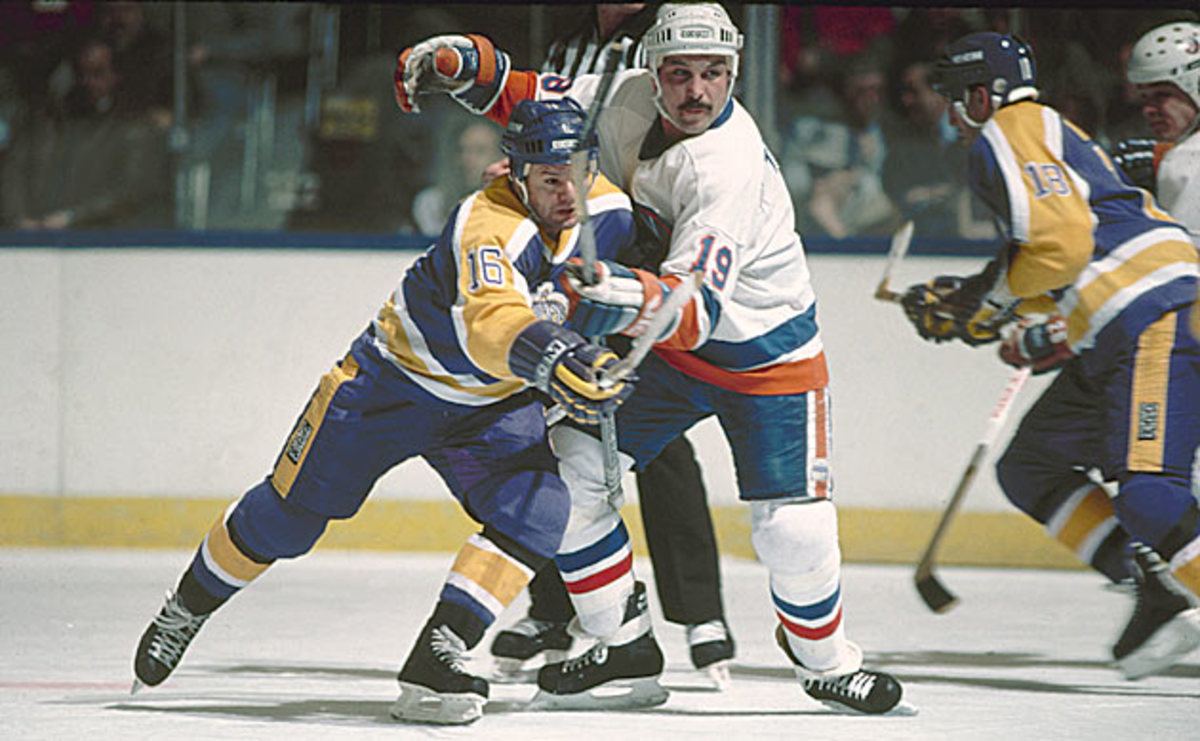
Dionne might be the game's greatest “what if?” player. Condemned to spend his career with a serious of miserable teams—he played in only 49 playoff games during his 18-season Hall of Fame career—he never got the chance to prove himself when it mattered most. But during the regular season, he cemented a reputation as one of the greatest scorers the game's ever seen. “Little Beaver” currently ranks fourth on the all-time goals list (731), 10th in assists (1,040) and sixth in points (1,771). He won three major awards (an Art Ross Trophy and two Lester Pearsons) and earned four First or Second All-Star Team berths while topping the 50-goal mark six times and the 100-point barrier seven. The secret to his success? Legs like tree trunks. “He had that low center of gravity,” said Denis Potvin, the Islanders' Hall of Fame defenseman. “You couldn't knock him off his feet.”
HENRI RICHARD, forward (5-7, 160)
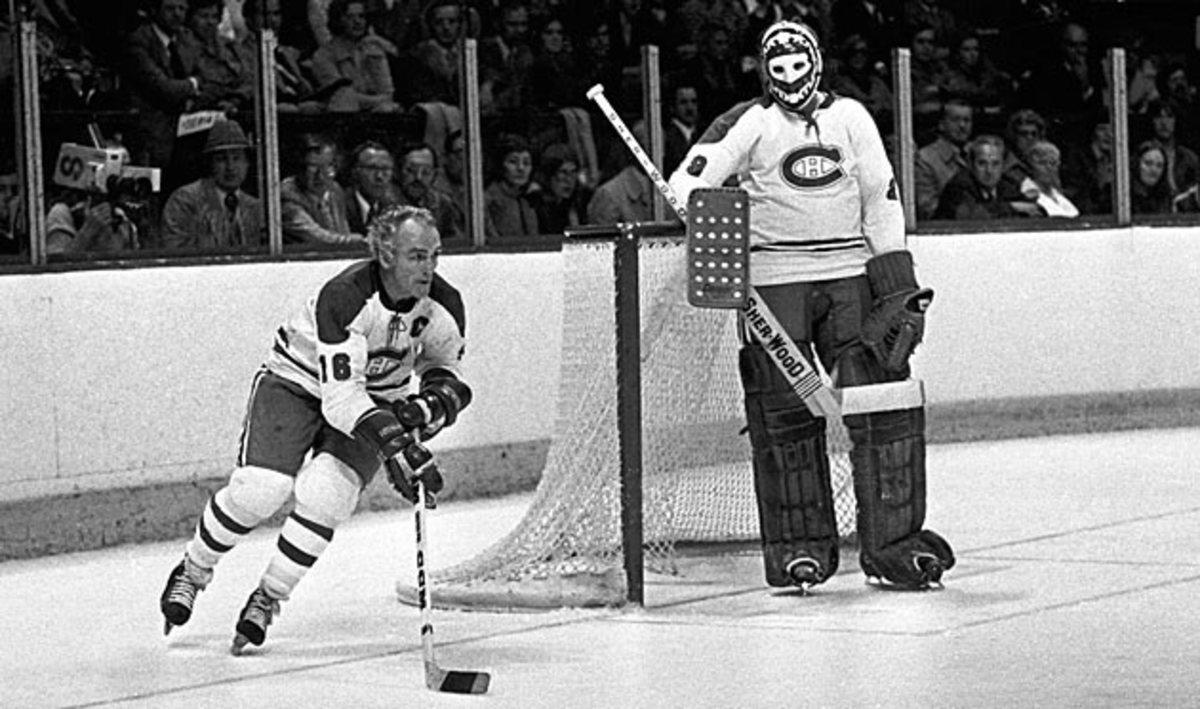
His 11 Stanley Cups are the most won by any player. That pretty much says it all about Richard, who overcame not just his diminutive size (hence his nickname "the Pocket Rocket" but also the massive shadow of his bigger, older brother Maurice "Rocket" Richard to establish himself as one of the all-time greats. Richard's success was built on guile and speed. Coach Toe Blake called him the fastest player in the league, maybe even faster than the legendary Howie Morenz in his prime. Seven times Richard finished among the top-10 in league scoring and by the time he retired, he'd blown past the Rocket's career point total (1,046 to 965). He was inducted into the Hall of Fame in 1979.
TED LINDSAY, forward (5-8, 163)
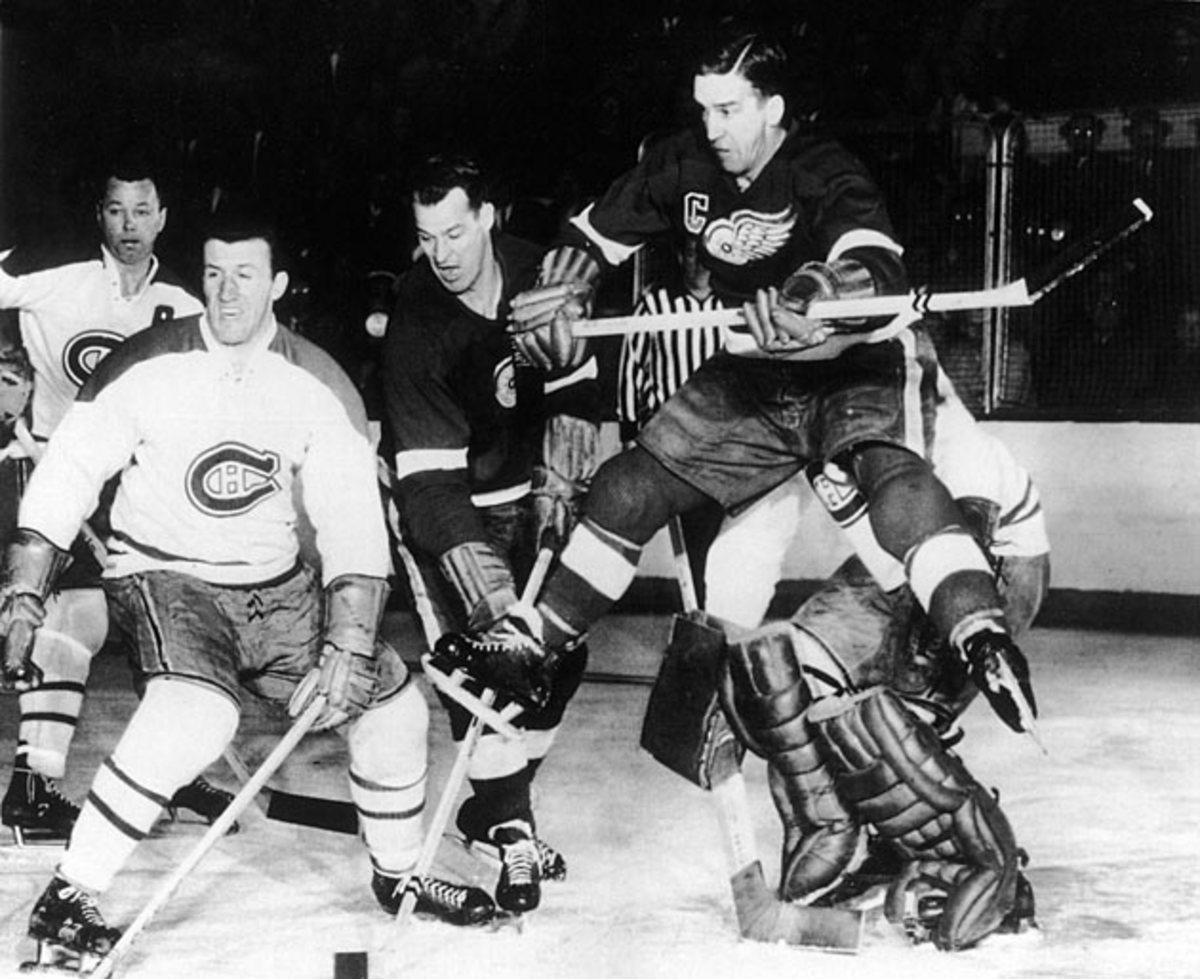
Take a look at Lindsay's mug an you'll understand how the Red Wings Hall of Famer played the game. He estimated the damage at more than 300 stitches, earning himself the nickname “Little Scarface” as well as "Terrible Ted." It didn't matter to him that opposing defensemen outweighed him by 40 or 50 pounds. He'd rather go through than around them, and he was willing to pay the price. He was built like a middleweight fighter, but always punched above his weight, taking on opponents, his own team and the league itself when he founded the first players' union. Over a 10-year span he was named the First All-Star Team left winger eight times and the Second Team once. He led the league in goals once, assists twice and earned the Art Ross in 1950 to go along with the four Stanley Cups he captured with the Red Wings.
BOB BAUN, defenseman (5-9, 182)
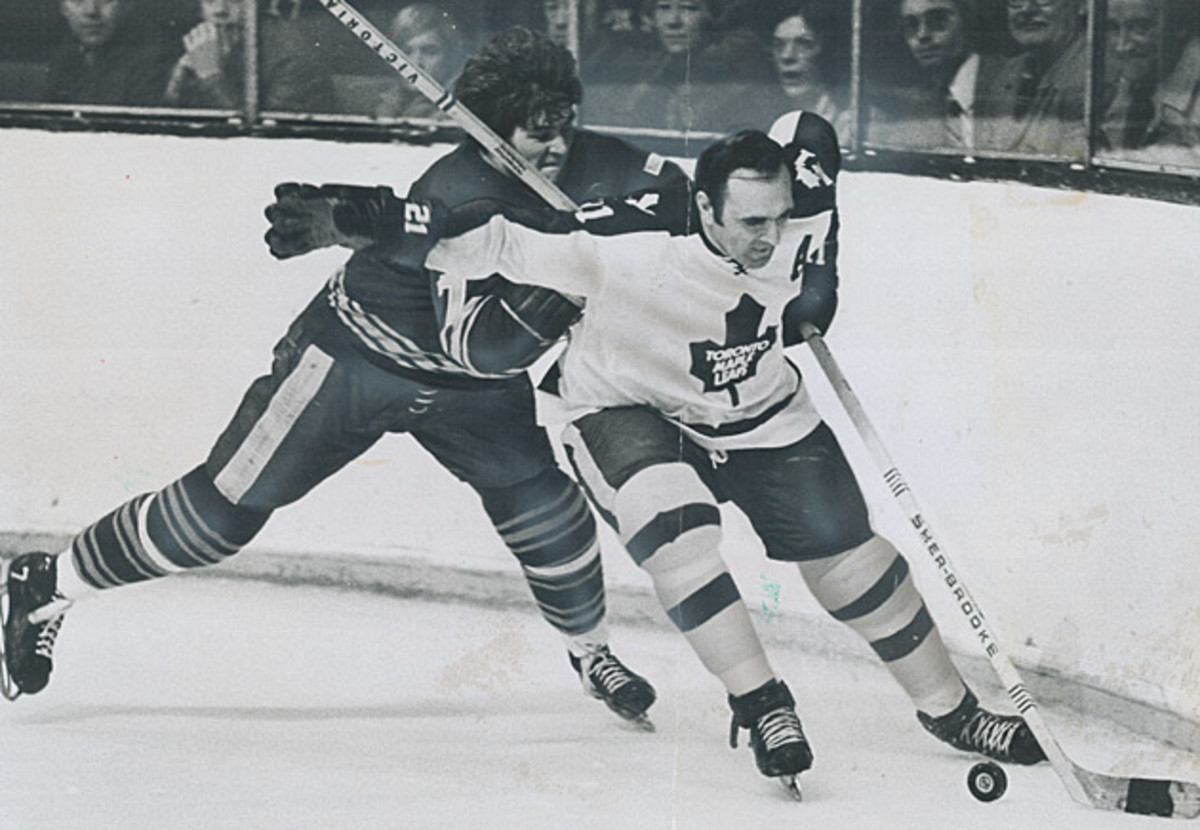
Baun secured his place in hockey history when he scored the winning goal in Game 6 of the 1964 Stanley Cup Final on a leg broken earlier in the game by a Gordie Howe slap shot. But that was just one of the nearly 1,000 games he played in the NHL, and while none of those could match the drama they were part of an impressive whole. Baun was a hard-hitting blueliner who won four Cups with the Maple Leafs and played in five All-Star Games. Former teammate Johnny Bower called him a fierce competitor. “He never gave an inch.” Aside from being a living link to Toronto's last championship, he's remembered for making one of the best investments in history: loaning Tim Horton $10,000 to get his fledgling donut business off the ground.
LEO BOIVIN, defenseman (5-8, 183)
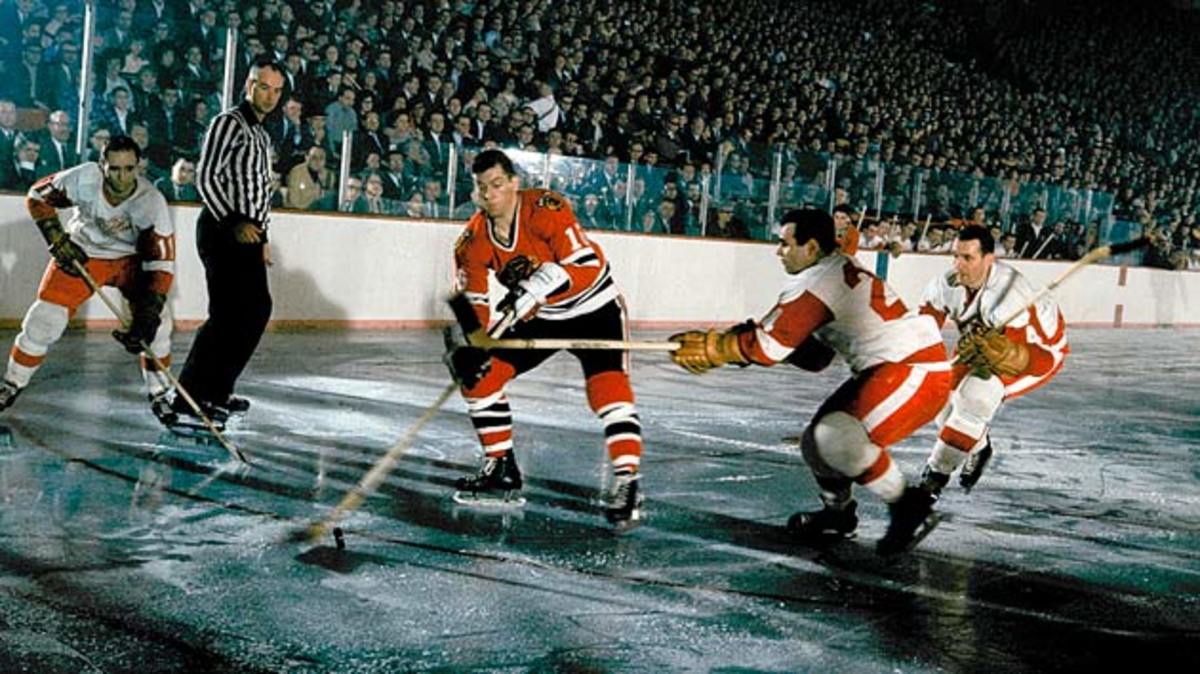
Boivin never claimed an award during his 18-season NHL career—the closest he came was third in the Calder Trophy voting in 1953—but he won plenty of respect along the way. A stay at home defenseman, he thrived on his smarts and an extra helping of toughness. All it took was a split second for him to separate an attacker from the puck—and usually from his senses—with a devastating open-ice hip check. “When he hit you, you knew it,” said Gordie Howe, who was both an opponent and a teammate of Boivin's. Tim Horton called him “the toughest defenseman in the league.” He was enshrined in the Hall of Fame in 1986.
FRANK BRIMSEK, goalie (5-9, 170)
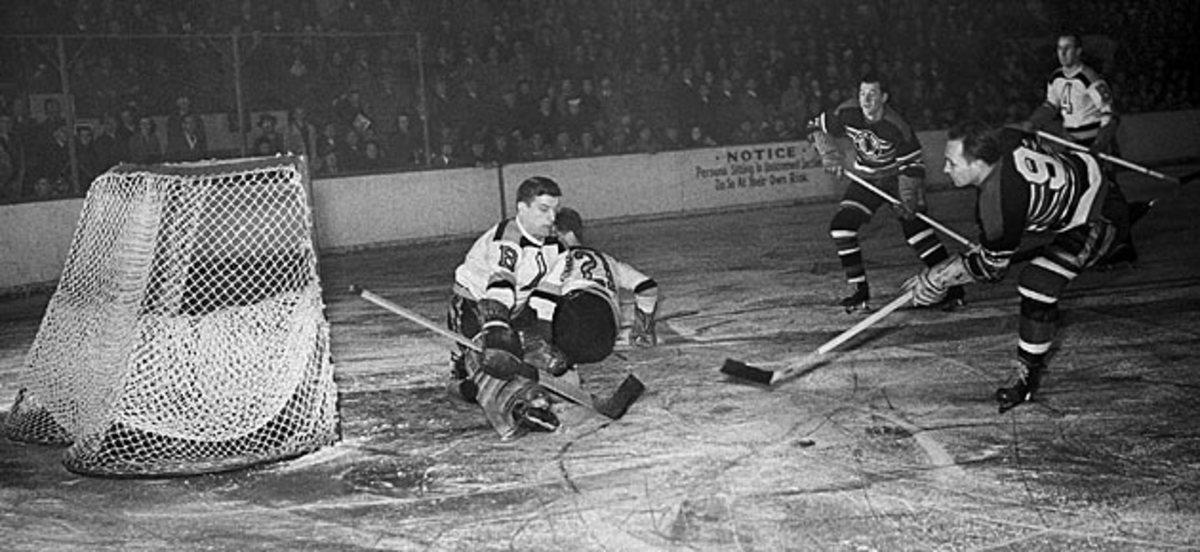
His rookie season might have been the best ever posted by a goaltender. Brimsek put together a pair of three-game shutout streaks in his first month in the league to earn the nickname, “Mr. Zero.” His finish was equally impressive: he took the Calder, Vezina and Stanley Cup in 1939, becoming the only goalie in history to turn that trifecta. Brimsek went on to lead the NHL in wins, shutouts and goals-against twice and was a First or Second Team All-Star in each of his first eight seasons with the Boston Bruins. He overcame his lack of size with a patience that frustrated shooters. “He was the toughest goalie I ever faced,” said Maurice Richard. “He never made the first move, and never left you any room to shoot.”
Honorable mentions: Shrimp Worters (G; 5-3, 135); Gump Worsley (G; 5-7, 180); Roger Crozier (G; 5-8, 165); Johnny Bower (G; 5-9, 189); Yvan Cournoyer (forward; 5-7, 178); Stan Jonathan (F; 5-8, 175), Dennis Maruk (F; 5-8, 175); Rod Gilbert (5-9, 180); Dave Keon (F, 5-9. 165); Rene Robert (F; 5-9, 184); Howie Meeker (F; 5-9, 165); Theo Fleury (F; 5-6, 182)
[pagebreak]
Current
Martin St. Louis, forward (5-8, 176)
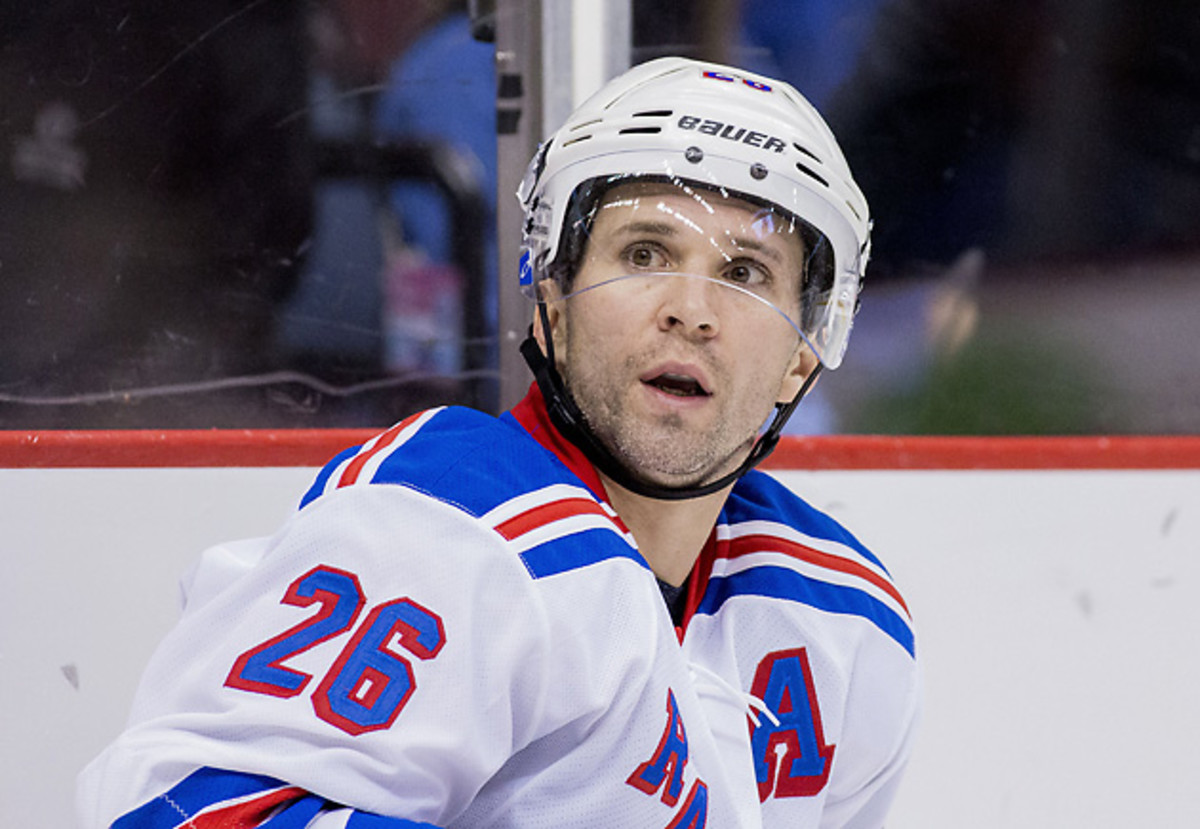
Despite being a three-time Hobey Baker finalist, St. Louis went undrafted and had to settle for an AHL deal to prove that he could compete with the pros. Six years later, at 28, he became the first collegiate player to capture the Art Ross Trophy and added 24 points in 23 games to lead the Tampa Bay Lightning to the 2004 Stanley Cup, the first in franchise history. In the years that followed, St. Louis has put up more than 1,000 career points proving that will and skill can overcome any obstacles created by a lack of size. “Absolutely, he's been an inspiration,” 2014 Hobey Baker winner Johnny Gaudreau said of St. Louis. “He's opened a door for players like me.”
Mats Zuccarello, forward (5-7, 179 lbs.)
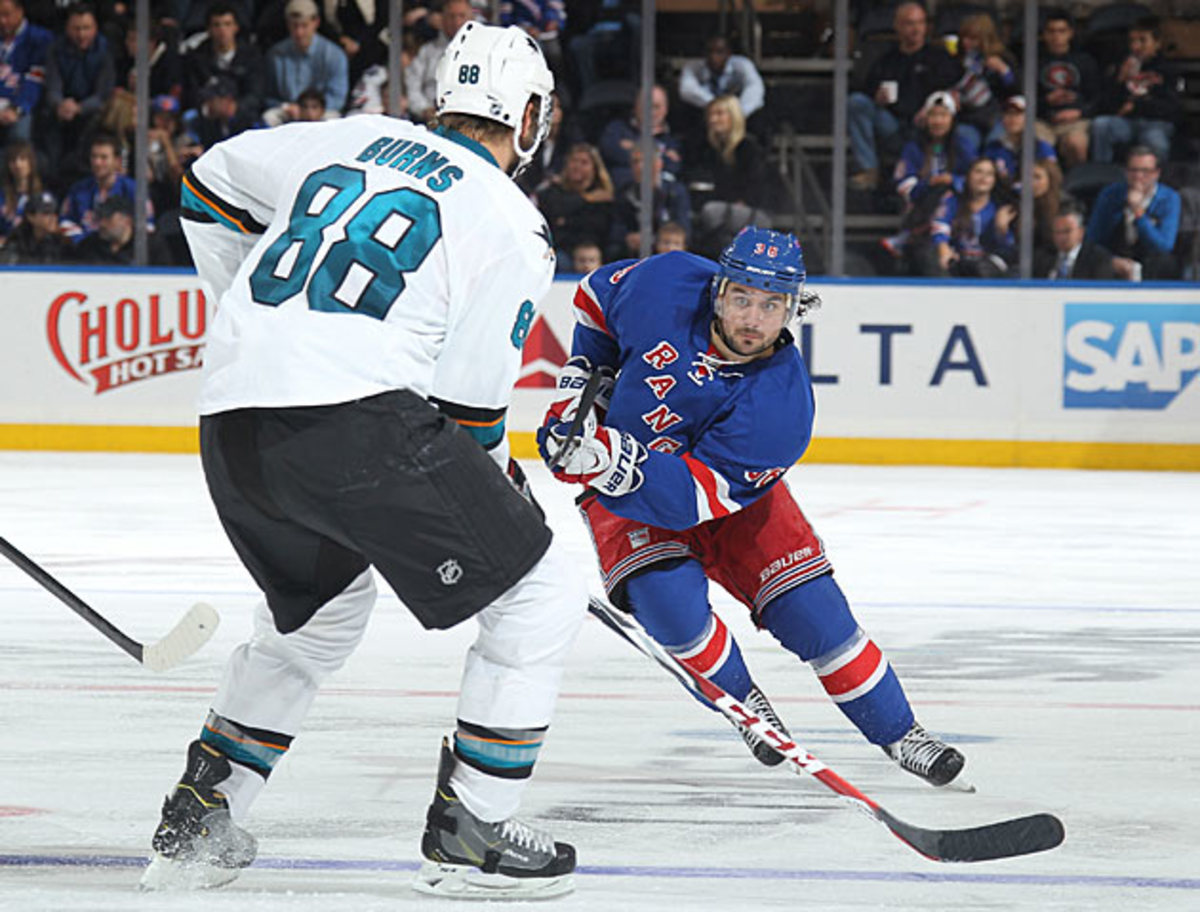
The road to success was, fittingly, short for Zuccarello, who left his native Norway at 20 to play against better competition in Sweden's top league. In just his his second season there he captured the SEL scoring title and was named league MVP after tallying 64 points for MoDo. But it was his performance for the outgunned Norwegians at the Vancouver Olympics that caught the eyes of scouts. He scored three points in four games but was a constant threat against the world's best players, leading the Rangers to sign him as a free agent in May 2010. Though his first crack with the team was an exercise in frustration, he found his comfort zone last season under new coach Alain Vigneault. “The Hobbit” led the Blueshirts in scoring with 59 points during the regular season, then chipped in 13 more in the playoffs to help power the Rangers to the Stanley Cup Final. “He's so creative with the puck,” says teammate Henrik Lundqvist. “Just amazing hands.”
Brendan Gallagher, forward (5-9, 180 lbs)
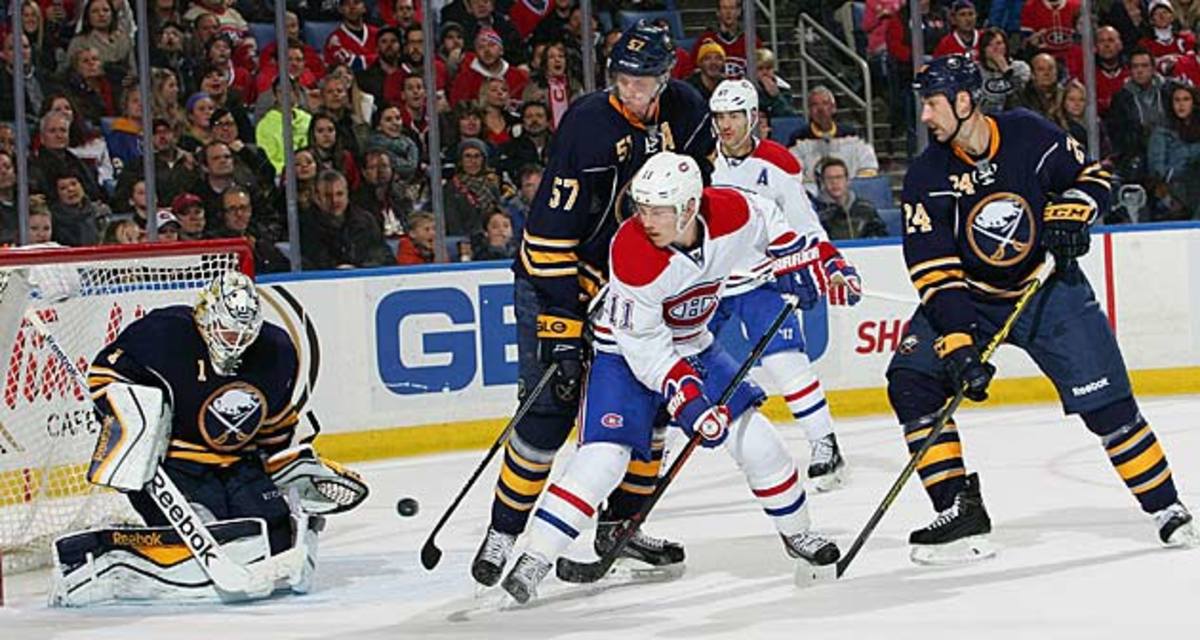
“You've heard that old saying, “It's not the size of the dog in the fight, it's the size of the fight in the dog.” Gallagher embodies it to a T. He views the puck like a hunk of raw meat and he'll scrap and claw to claim it for his own. “You know what you brings,” said Bruins coach Claude Julien. “It's the same night in, night out with that guy. He competes hard. He's relentless.” Gallagher has learned to turn his size into his advantage, using his low center of gravity to plant roots in front of opposing netminders and his long stick for leverage. “He's a wrecking ball ... a real piece of work” said a scout whose team passed on Gallagher five times in his draft year (2010). “We blew it with him. I think he really likes proving everybody was wrong about him.”
Jared Spurgeon, defenseman (5-9, 168)
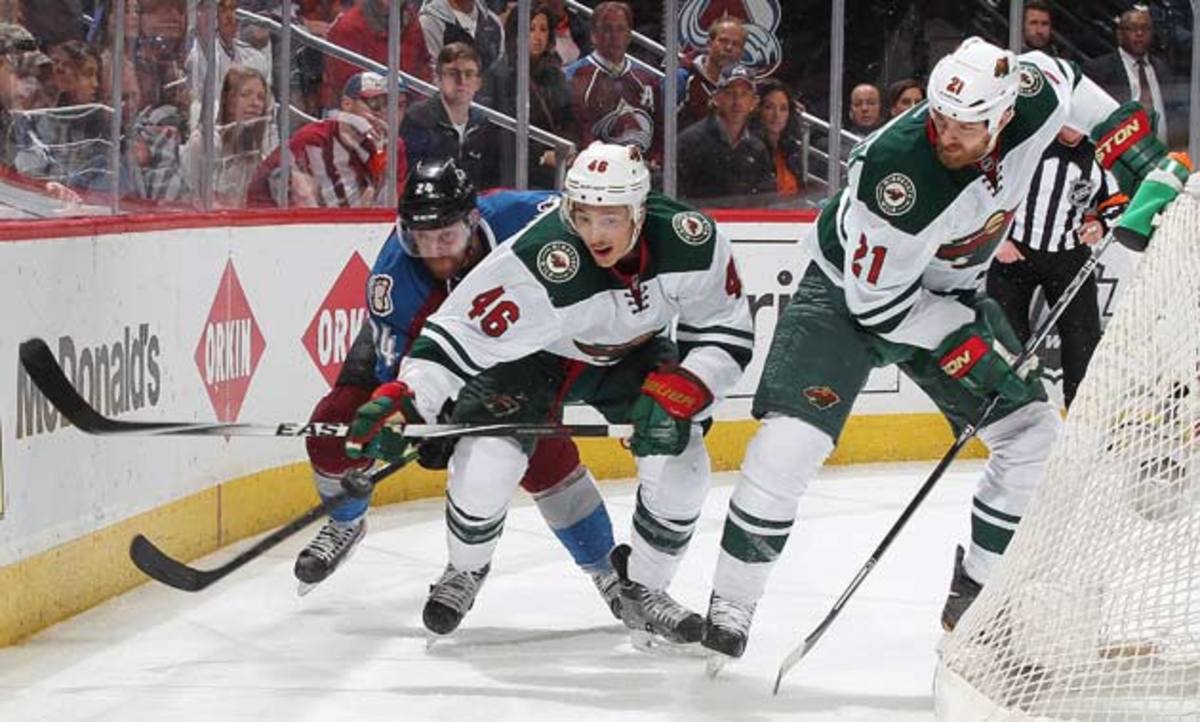
The Islanders took a chance on Spurgeon, drafting him 156th overall from the Spokane Chiefs in 2008 — and then chose not to sign him. The Wild took their gamble a few months after he became a free agent, inviting him to camp on a tryout deal. He earned a two-way contract and was assigned to Houston of the AHL, where he lasted all of 23 games before being called up to The Show. He's been a key member of Minnesota's blueline ever since, relying on quickness and elite hockey sense to become a master of transition—and to survive the corner battles with much larger forwards. “He reads the play so well,” Wild coach Mike Yeo said. “He's consistent, he's easy to coach. He makes it easy to forget how small he is.”
Torey Krug, defenseman (5-9, 180)
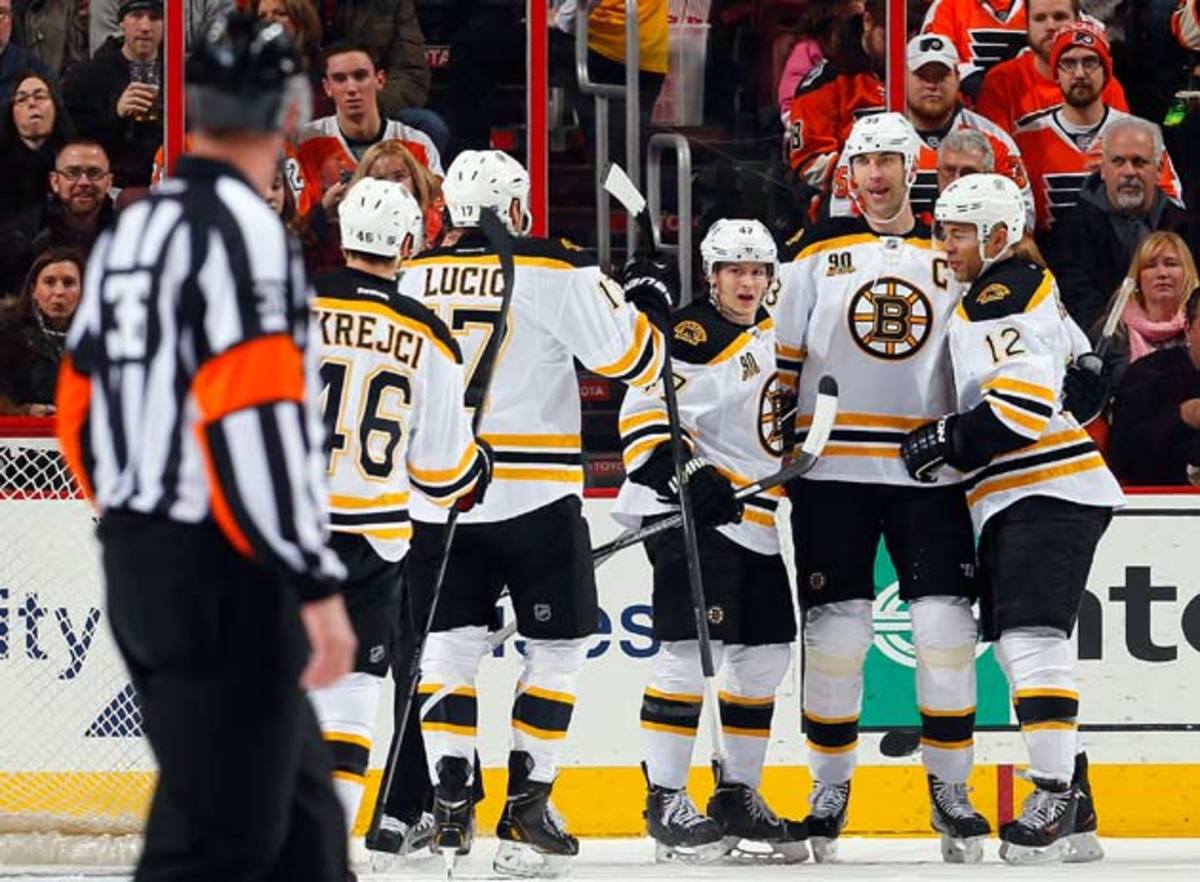
“What people missed on Torey Krug was they were so busy measuring him in height, they forgot to measure his heart,” Michigan State coach Tom Anastos told ESPN Boston. Krug has heart in spades, to go along with blazing speed and elite hockey sense. “I think I read the play well, I can make a good pass ... and I have a shot that I can get to the net,” Krug said. That makes him a dangerous offensive player, and it's that ability to produce that allows him to succeed at a time when most defenders have him by six inches and 30 pounds. A dynamic presence with the extra man, he played a key role in elevating Boston's power play from 26th in 2012-13 to third last season.
Jhonas Enroth, goalie (5-10, 166*)
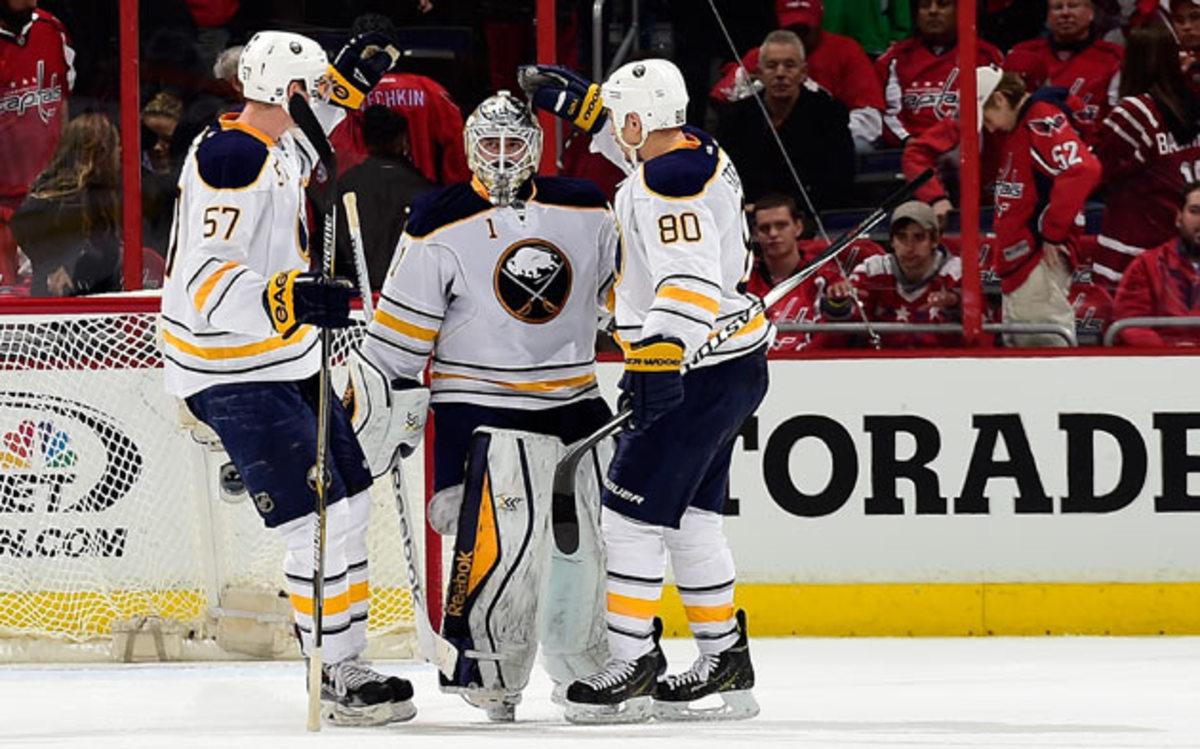
Enroth bumps his head on our 5-9 qualification bar, but he earns mention as the NHL's smallest regular goaltender. A junior sensation in Sweden, he was selected in the second round by the Sabres in 2006. Since then, he's used his time in the minors, and as Ryan Miller's understudy, to adapt his approach to the North American game. “It's so much faster over here,” he said. “[As a smaller goalie,] I have to be quicker with my reads and always prepared for the shot. I have to be that much faster than the other guy to succeed.” That success had been hard to find with the rebuilding Sabres—it came much easier with his national team while leading Sweden to World Championship gold in 2013 and as part of its silver medal-winning effort at the 2014 Sochi Games—but he's been superb this season, almost singlehandedly helping Buffalo turn its season around after a disastrous start.
Honorable mentions:Brian Gionta (F; 5-7, 175); Brad Marchand (F; 5-9, 183); Mike Cammalleri (F; 5-9, 190); Johnny Gaudreau (F; 5-9; 150)
